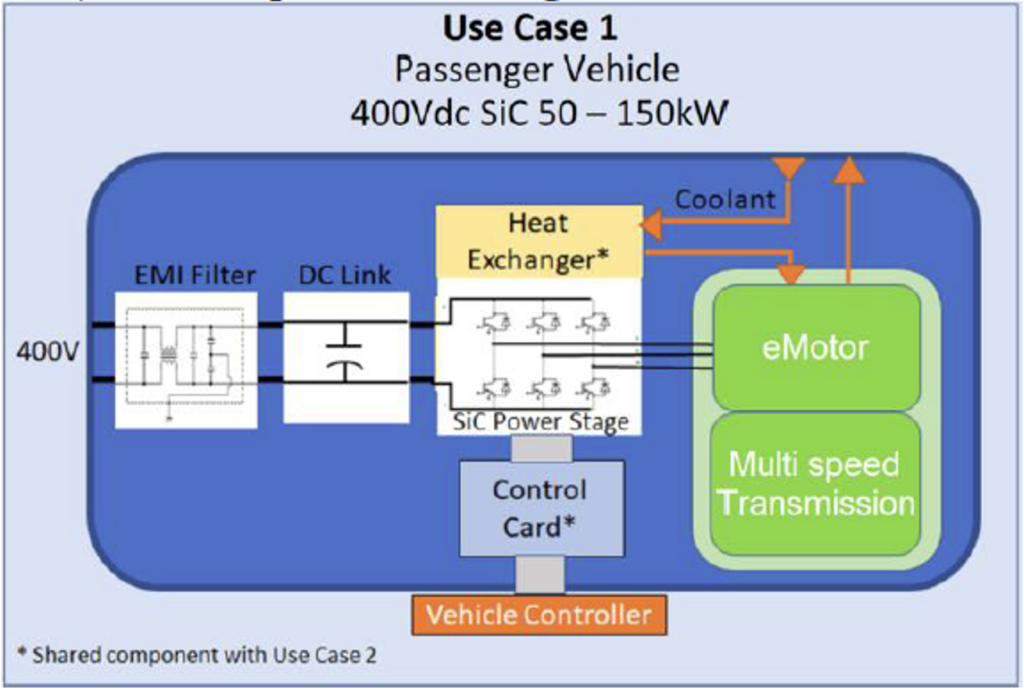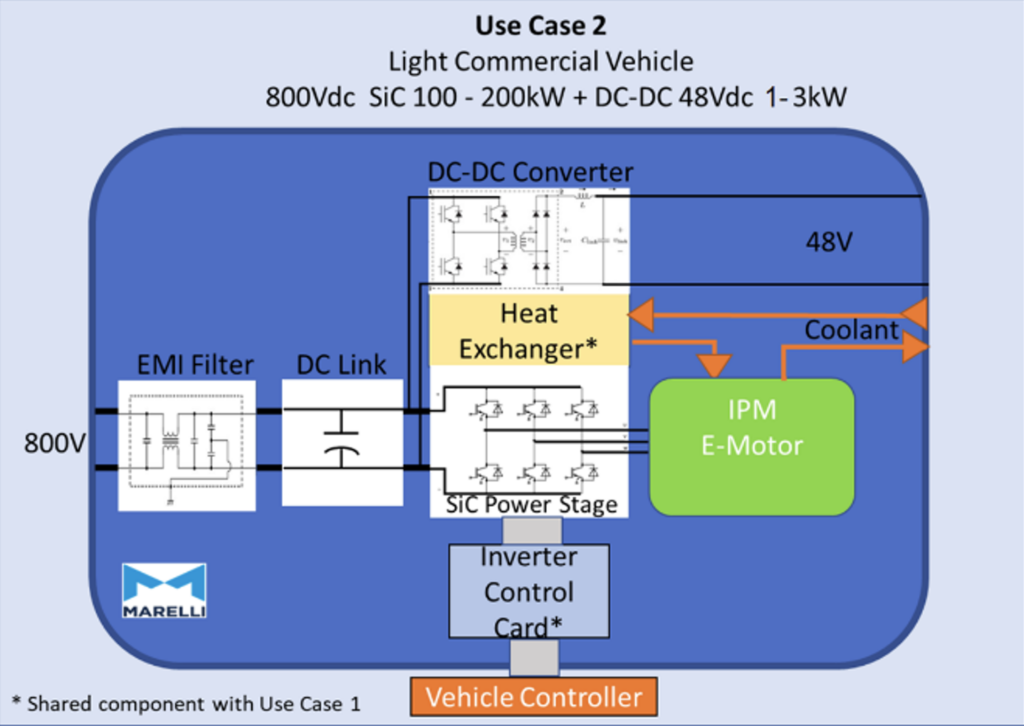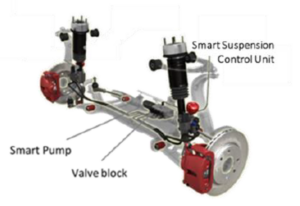Use Cases
In total four experimental Use Cases (UC1 – UC4) are outlined which are described in more details in the following.
UC1: Integrated WBG-based traction inverters, HV/LV DC/DC converters and electric motors for high volume passenger vehicle up to 150 kW

UC2: Integrated WBG-based traction inverters, HV/LV DC/DC converters and electric motors for light commercial vehicles
The use case targets light commercial vehicle applications and focuses on high levels of integration. It consists of an advanced 800V silicon-carbide (SiC-)based inverter, 800V-to-48V DC/DC converter, and an interior permanent magnet (IPM) traction motor. The DC/DC converter and inverter will share as many components as possible, and advanced topologies for the DC/DC converter will be investigated.

UC3: Integrated WBG-based on-board chargers and HV/LV DC/DC converters
The activity will target the development of a new family of scalable and integrated WBG-based OBCs and HV/LV DC/DC converters, for which the HiPE methodology will involve the following aspects:
- Assessment of different WBG technologies
- Assessment of innovative OBC topologies
- Integration of the OBC with HV/LV DC/DC converters for vehicle auxiliaries
The experimental implementation will focus on a 22 kW 800V integrated WBG-based OBC and HV/LV DC/DC, which will be Use Case 3 of HiPE, and will be implemented at the test rig level.
UC4: Integrated and fault-tolerant power electronics (PEs) for auxiliaries and chassis components
The significance of the power levels associated with the actuation of the auxiliaries and chassis components of modern electrified vehicles is often realized with low priorities, even if the power ratings are progressively increasing. The trend is expected to continue with the introduction of BEVs as the level of driving automation increases, with driving comfort requirements related to the limitation of motion sickness issues likely to require wider adoption of active suspension technologies. As a consequence, the power ratings associated with suspension actuation and other ancillaries are reaching values at which power loss reduction activities within the PE components and electric drives become impactful at the vehicle level.

